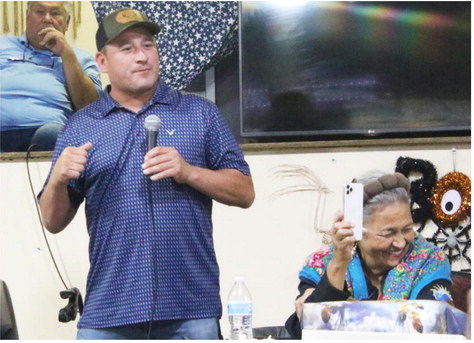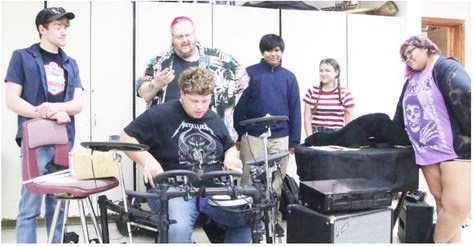Governor Finalizes Budget With Last-Minute Vetoes
With a flurry of bill signings and vetoes, Gov. Greg Gianforte finalized Montana’s next two-year budget last week, striking hundreds of millions of dollars approved by legislators in what he described as an effort to eliminate unnecessary spending.
Among the spending nixed by Gianforte’s veto pen, applied to standalone bills and specific items in the state’s main budget bill, were higher reimbursement rates for some types of health care providers, grants for senior citizen centers and subsidies aimed at bolstering the state’s frayed child care workforce. The cuts included bills and provisions advanced by both Democrats and Republicans, some of which had passed with enough votes to potentially override a veto.
“As I have done with other hefty spending bills the Legislature passed, I have keenly reviewed the budget, and made some difficult decisions,” Gianforte wrote in a memo explaining his actions on the state’s main budget bill, House Bill 2. The bill sets most state spending for the two-year budget period that opens July 1.
Gianforte wrote that he stripped $31 million from HB 2 and vetoed $349 million in spending from other bills passed this year.
His office didn’t respond Friday, May 20, to a request for a breakdown showing how it arrived at that total. Using numbers from the nonpartisan legislative fiscal division, MTFP was able to independently verify Friday that the governor had vetoed at least $264 million in General Fund spending.
Minority Democrats responded with criticism of the vetoes, faulting Gianforte for prioritizing a major income tax cut, projected to cost the state $278 million a year once fully implemented, over spending that they believe would produce significant public good.
Democrats cited a bill that would have put $600,000 a year in state money toward offering free school meals to all students who currently qualify for reduced-price copays. “[H]e wants us to believe that we can’t afford $600,000 for school meals. Taking food out of the mouths of low-income kids to finance enormous tax giveaways to the rich is disgusting,” House Minority Leader Katie Sullivan said in a statement Friday.
Other Democrat-sponsored bills that had won enough bipartisan support to pass the Legislature but fell to Gianforte’s veto pen included House Bill 456, which would have expanded the state’s Best Beginnings child care scholarship program by making it easier for child care workers to qualify.
The bill’s sponsor, Rep. Jonathan Karlen, D-Missoula, said Friday that the bill was an effort to address situations where child care workers with working partners make too much to qualify for the child care subsidy and decide they can’t earn enough working as a provider to offset the cost of day care for their own kids.
“If you want to keep people in the child care workforce when they have kids, this is really the only way to do it,” Karlen said.
The child care bill would have cost the state $22 million through 2029, according to legislative analysts. In a memo explaining his veto, Gianforte said future child care spending provided by another bill would give the state tools to address the state’s child care shortage.
House Appropriations Committee Chair Llew Jones, R-Conrad, said Friday that he sees the governor’s last-minute budget cuts as appropriate. He said he believes the large tax cuts passed by this year’s Legislature — combined with the potential state impact of federal tax changes proposed by President Donald Trump and congressional Republicans — could put the state’s finances in a pinch in the coming years.
The income tax cut, offset spending made necessary by his major property tax relief measure and other legislation could, Jones said, reduce state revenues by more than $1 billion over the next two years.
“I’m not saying it was a bad thing to do — I’m saying it’s big,” he said.
“You’ve got the Big Beautiful Bill, hanging out there with another $200-million-ish,” Jones also said, citing the potential state budget impacts of a major federal package pending in Congress. “You take that much out of the revenue side — I’m worried about the structural flow going forward.”
An income tax simplification measure passed by the 2021 Legislature, which took effect on 2024 tax returns, aligns the taxable income number used for state tax filings with the adjusted gross income figure used by federal forms. That means less paperwork for Montana tax filers, but also makes the state budget, which is primarily funded by income taxes, more vulnerable to being upended by federal changes.
A June 10 memo by legislative staff indicated that several provisions under consideration by Congress could lower state collections by an estimated $120 million annually, including larger standard deductions and leaving tip income and overtime pay untaxed. (Tip income was untaxed at the Montana level until the simplification measure switched the tax code to align with federal taxes last year.)
The memo also indicates that proposed shifts to Medicaid health coverage and SNAP food assistance programs could force cuts to the state-administered programs.
The primary state budget bill was passed this year over opposition from Senate President Matt Regier, of Kalispell, and other hardline Republicans, picking up yes votes from comparatively moderate Republicans and nearly all members of the Legislature’s Democratic minority. The vote was part of a larger pattern where Jones and other centrist Republicans, including nine GOP senators who spent much of the session entangled in a highly public spat with the remainder of their caucus, allied with minority Democrats on major tax and spending bills.
The Senate’s Republican leadership, aligned with the party’s hardline wing, opposed the budget bill and other major budget measures championed by Jones. In an April opinion column published by the Flathead Beacon, Senate GOP leaders accused the Legislature of passing a “Democrat-hijacked budget” and urged Gianforte to veto much of its spending.
Regier applauded Gianforte’s vetoes in a Friday interview, saying he hopes the action encourages lawmakers to rein in the spending they authorize when they return to the Capitol in 2027. “Love what he’s done here,” Regier said. “It had to be done here, and [I] appreciate him doing it.”
Among other points, Regier and other hardline Republicans had argued the budget passed by the Legislature would leave the state with a shortfall by 2029. (The same, legislative analysts said in December, was true of Gianforte’s budget proposal heading into the session).
A May 7 balance sheet prepared by the legislative analysts after lawmakers adjourned indicated that if Gianforte had signed all bills passed by the Legislature that he hadn’t yet acted on, ongoing state General Fund revenues would remain above ongoing expenditures through the 2026 and 2027 fiscal years, the two-year period covered by this year’s legislative budget.
However, the report also projected that revenues would dip below expenditures heading into 2028 and 2029, the period covered by the budget that will be set when the Legislature meets again in 2027. The state Constitution requires the Legislature to pass a balanced budget.
The single largest contributor to the forecasted shortfall was the income tax cut, which passed with Republican support and near-universal Democratic opposition. Legislative analysts predict that the tax cut, which doesn’t take full effect until the 2027 tax year, will reduce state revenues by a cumulative $756 million through 2029 — more than twice the amount Gianforte says his cuts saved. The status sheet also accounts for the costs of offering union-negotiated raises to state employees, $190 million through 2029, and offsetting more than $200 million in reduced collections for state-level school property taxes as the Montana Department of Revenue implements the property tax relief legislation.
Another major item weighing down the state’s budget balance is General Fund revenue that will be diverted to fill a newly created “Growth and Opportunity” trust that supporters envision as a long-term endowment able to spin off interest returns for programs such as bridge construction, property tax relief and child care support. Legislative analysts peg the likely cost of setting up that endowment, which was championed by Jones, at more than $900 million through 2029 — though the governor’s budget director can reduce how much money is transferred into the trust in the event of a budget shortfall.
Jones said Friday that the trust, which has been criticized as unnecessary by hardline Republicans, gives the state options in the event it ends up in a budget crunch.
“You still have the money if you’re desperate,” he said, “It doesn’t go away.”

